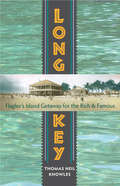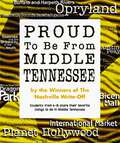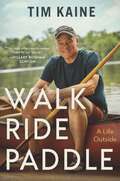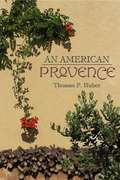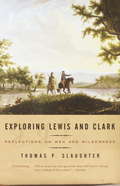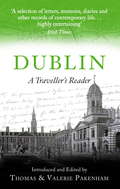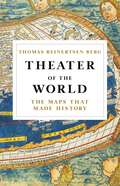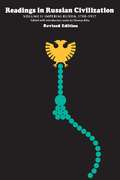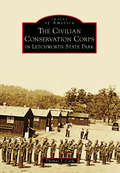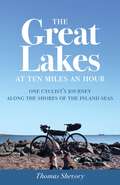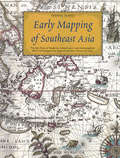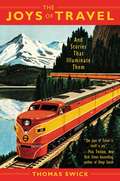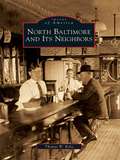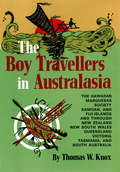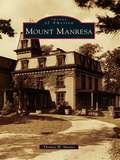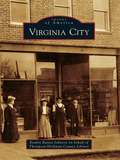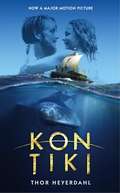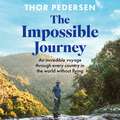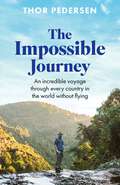- Table View
- List View
Around the Town of Saratoga
by Thomas N. Wood IIIAs the American struggle for independence intensified, Saratoga became a focal point of warring activities. Both colonists and loyalists maintained forts, camps, and officer headquarters within town. In 1777, after the two Battles of Saratoga, American forces gained the surrender of BritishGen. John Burgoyne, thus turning the tide of the Revolutionary War. The name Saratoga comes from the Mohawk word meaning either "place of the swift water" or "hillside country of the great river." True to its name, the town spreads across rolling hills along the western side of the Hudson River. The river itself, together with two early main roads and a canal, brought prosperity to the area. Saratoga became a major shipping terminal. The town boundaries changed several times throughout the years, but the rural character of the town and the spirit of its residents remained constant.
Long Key: Flaglers Island Getaway for the Rich and Famous
by Thomas Neil KnowlesWith a modest two-story hotel and various small cottages, Long Key Fishing Camp offered a dramatic departure from the usual opulence of Henry Flagler’s hotels that dotted the east coast of Florida. The final resort opened during his lifetime, Long Key lacked palatial structures with manicured grounds, extravagant recreational facilities, and world-class amenities. Prospective visitors were frankly warned not to expect the same level of comfort provided at sister properties. Yet still they came.Carefully researched and replete with photographs and maps never before published, Long Key offers the first history of this unique destination. Historian Thomas Knowles recounts the extraordinary tale of how a railroad work camp became a world-renowned sportfishing center and a preferred vacation spot of a cadre of well-to-do individuals that included businessmen, poets, nobles, and politicians.This rustic island, with its unparalleled fishing grounds and cabins named after local fish—“The Kingfish,” “The Porpoise,” “The Barracoota,” “The Shark”—inspired fierce loyalty among its clientele, even during the dark years of the Great Depression. Zane Grey, Lou Gehrig, Wallace Stevens, Charles Kettering, Andrew Mellon, and Herbert Hoover were among those who would return season after season.Completely destroyed by the fatal 1935 Labor Day Hurricane, the first category 5 storm to make landfall in the United States, Flagler’s unique island getaway has been largely forgotten. Knowles expertly depicts this slice of long-lost Florida and resurrects the famous personalities who found refuge from the limelight at Long Key.
Proud to Be from Middle Tennessee
by Thomas NelsonThe Nashville Scene created "Calling All Kids . . . The Nashville Write-Off" in 1996 as a way to inspire young writers. This year, the weekly paper asked its budding authors to address the following topic: "My Favorite Things to Do in Middle Tennessee." Entry forms were run in the Scene over several weeks, and were also distributed at various malls, pizza joints, and at least one optometrist's office. Soon, essays were flooding our offices. After a panel of judges was convened to review the works, one grand prize winner was selected from each age category (ages 6-12, and 13-18), and a number of honorable mentions were selected as well. The winners were announced at the Southern Festival of Books, and they were awarded cash prizes. The winners were also assured of having their work published. This book, in fact, is a compliation of the winning works.
Walk Ride Paddle: A Life Outside
by Thomas NelsonA compelling account of one man&’s journey across hundreds of miles of Virginia wilderness and a moving testament to the optimistic spirit of America, Walk Ride Paddle provides an unseen glimpse into a life outside. In 2019, Tim Kaine—Virginia senator and former Democratic vice presidential candidate—commemorated both his sixtieth birthday and his twenty-fifth year in public office by undertaking a three-part journey across the Virginia landscape as he hiked, cycled, and canoed across the state. His chronicle became an organic reflection of the extraordinary events occurring across America during that time, including two impeachment trials, a global pandemic, growing racial protests, the January 6 attack on the Capitol, and more.During weekends and in Senate recess weeks, Kaine—over a period of several years—hiked the 559 miles of the Appalachian Trail that cross Virginia from Harpers Ferry to the Tennessee border; biked 321 miles along the crest of the Virginia Blue Ridge on the beautiful parkways built during the Great Depression to create jobs and give everyday people on the East Coast an accessible place to vacation; and canoed the entire James River—348 miles from its headwaters in the Allegheny Mountains to its entrance into the Chesapeake Bay. Along the way, Kaine reflected on the events that have shaped both his life and the world around him, sharing his deep love for the natural world and the importance of preserving it for future generations in a fascinating memoir that blends adventure, reflection, and political insight.With immediacy and honesty, Kaine pulls back the curtain to reveal his inner thoughts during such monumental times. Kaine&’s storytelling gift and wise observations offer a fascinating glimpse into the mind of a seasoned politician and outdoor enthusiast.Walk Ride Paddle is a captivating memoir of one man&’s physical journey through the Virginia wilderness—but it is also a unique and ultimately optimistic perspective on these pivotal moments in history, offering inspiration, wisdom, and hope.
An American Provence
by Thomas P. Huber"I have talked about luscious wines and succulent fruit and exquisite dinners. But there may be no more evocative experience of the two valleys than the smell of new-mown hay in the fields at dusk. If a person were to close their eyes, they could not tell if they were in Provence or the North Fork Valley. That sweet, earthy odor is part of the beauty of these places." -From An American Provence In this poetic personal narrative, Thomas P. Huber reflects on two seemingly unrelated places-the North Fork Valley in western Colorado and the Coulon River Valley in Provence, France-and finds a shared landscape and sense of place. What began as a simple comparison of two like places in distant locations turned into a more complex, interesting, and personal task. Much is similar-the light, the valleys, the climate, the agriculture. And much is less so-the history, the geology, the physical makeup of villages. Using a geographer's eye and passion for the land and people, Huber examines the regions' similarities and differences to explore the common emotional impact of each region. Part intimate travelogue and part case study of geography in the real world, An American Provence illuminates the importance sense of place plays in who we are.
Exploring Lewis and Clark: Reflections on Men and Wilderness
by Thomas P. SlaughterMost Americans know that Meriwether Lewis and William Clark led our nation's first trans-continental exploratory expedition, which was sent west by President Thomas Jefferson in 1803. Their journey is one of the most celebrated events in American history and one of the most written about. But most of us do not know any more than what the explorers told us, or what they wanted readers of their voluminous journals to know, or anything other than what they understood about themselves and their wilderness experiences. Exploring Lewis and Clark probes beneath the traditional narrative of the journey, looking beyond the perspectives of the explorers themselves to those of the woman and the men who accompanied them, as well as of the Indians who met them along the way. It reexamines the journals and what they suggest about Lewis's and Clark's misinterpretations of the worlds they passed through and the people in them. Thomas Slaughter portrays Lewis and Clark not as heroes but as men--brave, bound by cultural prejudices and blindly hell-bent on achieving their goal. He searches for the woman Sacajawea rather than the icon that she has become. He seeks the historical rather than the legendary York, Clark's slave. He discovers what the various tribes made of the expedition, including the notion that this multiracial, multiethnic group was embarked on a search for spiritual meaning. Thomas Slaughter shines an entirely new light on an event basic to our understanding of ourselves. He has given us an important work of investigative history.
Dublin: A Traveller's Reader
by Thomas Pakenham Valerie Pakenham'Unforgettable . . . no better compilers could have been found' - History Today'Dublin's past comes dazzlingly alive' - Publishing News'Erudite and practical simultaneously' - Gemma Hussey, Irish IndependentDublin's turbulent history, its intensely literary and theatrical character of long literary lineage, its revolutionary ideals and heroes, and its ordinary life are all brought to life in this collection of letters, diaries and memoirs of travellers to the city and by Dubliners themselves. The extracts, from medieval times onwards, include Red Hugh O'Donnell's escape from Dublin Castle, James Joyce's plans for a novel while staying at the Martello Tower, and the seizure of the GPO by Irish volunteers during the Easter Rising. The book also includes gossip and story-telling in the humorous sketches of many famous Dubliners.
Theater of the World: The Maps that Made History
by Thomas Reinertsen BergA beautifully illustrated full-color history of mapmaking across centuries-- a must-read for history buffs and armchair travelers. Theater of the World offers a fascinating history of mapmaking, using the visual representation of the world through time to tell a new story about world history and the men who made it. Thomas Reinertsen Berg takes us all the way from the mysterious symbols of the Stone Age to Google Earth, exploring how the ability to envision what the world looked like developed hand in hand with worldwide exploration. Along the way, we meet visionary geographers and heroic explorers along with other unknown heroes of the map-making world, both ancient and modern. And the stunning visual material allows us to witness the extraordinary breadth of this history with our own eye
Readings in Russian Civilization Volume II: Imperial Russia, 1700–1917 (None Ser.)
by Thomas Riha"This new and enlarged version of Readings in Russian Civilization is the result of fairly extensive revisions. There are now 72 instead of 64 items; 20 of the selections are new. The first volume has undergone the least change with 3 new items, of which 2 appear in English for the first time. In the second volume there are 6 new items; all of them appear in English for the first time. The third volume has undergone the greatest revision, with 11 new items, of which 6 are newly translated from the Russian. It is the editor's hope that items left out in the new edition will not be sorely missed, and that the new selections will turn out to be useful and illuminating. The aim, throughout, has been to cover areas of knowledge and periods which had been neglected in the first edition, and to include topics which are important in the study of the Russian past and present. "The bibliographical headnotes have been enlarged, with the result that there are now approximately twice as many entries as in the old edition. New citations include not only works which have appeared since 1963, but also older books and articles which have come to the editor's attention."—From the Editor's Preface ". . . a judicious combination of seminal works and more recent commentaries that achieves the editor's purpose of stimulating curiosity and developing a point of view."—C. Bickford O'Brien, The Russian Review "These three volumes cover quite well the main periods of Russian civilization. The choice of the articles and other material is made by a competent and unbiased scholar."—Ivan A. Lopatin, Professor of Asian and Slavic Studies, University of Southern California
Civilian Conservation Corps in Letchworth State Park, The
by Thomas S. CookLetchworth State Park, located in the Genesee Valley of western New York State, is renowned for its natural beauty, scenic roads, trails, and recreational facilities. Created from the private estate of William Pryor Letchworth in 1907, the park quickly grew in size and popularity. A series of ambitious expansion and development plans were under way when the Great Depression struck, threatening the park's future. That future was restored when President Roosevelt's Civilian Conservation Corps brought hundreds of young men to the four CCC camps established in the park. From 1933 to 1941, they worked on cabins, roads, and other projects, while strengthening their bodies, minds, and futures. Their legacy is still enjoyed by thousands of park visitors today. The Civilian Conservation Corps in Letchworth State Park explores the stories of these camps, as well as the CCC "boys" and their legacy, through vintage photographs, camp and area newspapers, official reports, and the memories of CCC veterans.
I Believe I'll Go Back Home: Roots and Revival in New England Folk Music
by Thomas S. CurrenBetween 1959 and 1968, New England saw a folk revival emerge in more than fifty clubs and coffeehouses, a revolution led by college dropouts, young bohemians, and lovers of traditional music that renewed the work of the region's intellectuals and reformers. From Club 47 in Harvard Square to candlelit venues in Ipswich, Martha's Vineyard, and Amherst, budding musicians and hopeful audiences alike embraced folk music, progressive ideals, and community as alternatives to an increasingly toxic consumer culture. While the Boston-Cambridge Folk Revival was short-lived, the youthful attention that it spurred played a crucial role in the civil rights, world peace, and back-to-the-land movements emerging across the country. Fueled by interviews with key players from the folk music scene, I Believe I'll Go Back Home traces a direct line from Yankee revolutionaries, up-country dancers, and nineteenth-century pacifists to the emergence of blues and rock 'n' roll, ultimately landing at the period of the folk revival. Thomas S. Curren presents the richness and diversity of the New England folk tradition, which continues to provide perspective, inspiration, and healing in the present day.
Lyndhurst
by Thomas S. TreerMoses Cleaveland was sent to survey the lands of the Western Reserve of Connecticut into townships in 1796. Due to a strike, the surveyors were given plots within the new Euclid Township as part of their compensation. They sold these plots to arriving settlers from the east. Aristarkus and Sarah Brainard, the area's first family, arrived in 1831. In 1877, the Mayfield Plank Road was constructed allowing a steady stream of people and goods to easily travel from eastern farms to markets found at Doan's Corners in Cleveland, Ohio. As this part of Euclid Township grew, the area became Euclidville Village, later changed to Lyndhurst Village in 1920. The post-World War II building boom brought many young families to Lyndhurst and transformed the sleepy village into a charming 21st-century suburb.
The Great Lakes at Ten Miles an Hour: One Cyclist's Journey along the Shores of the Inland Seas
by Thomas ShevoryThe Great Lakes are a remarkable repository of millions of years of complex geological transformations and of a considerably shorter, crowded span of human history. Over the course of four summers, Thomas Shevory rode a bicycle along their shores, taking in the stories the lakes tell—of nature&’s grandeur and decay, of economic might and squandered promise, of exploration, colonization, migration, and military adventure. This book is Shevory&’s account of his travels, shored up by his exploration of the geological, environmental, historical, and cultural riches harbored by North America&’s great inland seas.For Shevory, and his readers, his ride is an enlightening, unfailingly engaging course in the Great Lakes&’ place in geological time and the nation&’s history. Along the northern shore of Lake Huron, one encounters the scrubbed surfaces of the Canadian Shield, the oldest exposed rock in North America. Growing out of the crags of the Niagara Escarpment, which stretches from the western reaches of Lake Michigan to the spectacular waterfalls between Erie and Ontario, are the white cedars that are among the oldest trees east of the Mississippi. The lakes offer reminders of the fur trade that drew voyageurs to the interior, the disruption of Native American cultures, major battles of the War of 1812, the shipping and logging industries that built the Midwest, the natural splendors preserved and exploited, and the urban communities buoyed or buried by economic changes over time. Throughout The Great Lakes at Ten Miles an Hour, Shevory describes the engaging characters he encounters along the way and the surprising range of country and city landscapes, bustling and serene locales that he experiences, making us true companions on his ride.
Early Mapping of Southeast Asia
by Thomas SuarezEarly Mapping of Southeast Asia follows the story of mapmaking, exploration and colonization in Asia from the 16th to the 19th centuries. It surveys Southeast Asia's geography and civilizations, its maps and their influence on Western worldviews, as well as the image of Southeast Asia in the eyes of its neighbors.
The Joys of Travel: And Stories That Illuminate Them
by Thomas SwickThe Joys of Travel: And Stories that Illuminate Them is a collection of Thomas Swick’s personal essays on what he has identified as "the seven joys of travel”: anticipation, movement, break from routine, novelty, discovery, emotional connection and heightened appreciation of home.The Joys of Travel awakens readers to pleasures that, as travelers, they may be taking for granted. It also shows non-travelers what they’ve been missing. It offers tips on how people can get the most out of their trips, as well as the titles of travel classics that will not only prepare them for the places they visit but make those places more meaningful once they get there. And it tells, through memories and stories, the tale of someone who has made a living writing about travel. In fact, the story of Thomas Swick’s life as a traveler neatly parallels the examination of a journey from beginning to end.Before you next trip, be it a family vacation or a backpacking tour of Europe, read The Joys of Travel. It will inspire you to get the most out of your time away from home and to get away more often.
North Baltimore and Its Neighbors
by Thomas W. BoltzLocated 25 miles south of Toledo, North Baltimore and its neighboring communities have seen dramatic changes since being settled in the 1830s. Pioneers labored to establish small farms and villages in the midst of what was then the Black Swamp, gradually achieving modest but precarious success. Then, in the 1880s, oil was discovered. The area flourished, attracting speculators, turning farmers into millionaires, and transforming quiet villages into rough-and-tumble boomtowns. It was a colorful period that also brought large homes, imposing commercial buildings, and grand town halls. However, by 1915, the oil field was depleted, and North Baltimore and its neighbors returned to their existence as quiet towns. Since then, many of the beautiful old buildings have disappeared, obscuring evidence of the area's dynamic history. With over 200 pictures, many from private collections, North Baltimore and Its Neighbors helps ensure that this history will not be forgotten.
The Boy Travellers in Australasia
by Thomas W. KnoxHere is humor, especially in many of the illustrations; nostalgia and escapism. The author was one of the most colorful and popular figures on the New York scene at the height of his career in the 1880's. This fine book is just one of his many legacies, and is an invaluable contribution toward a better understanding of our fine friends Down Under.
The Boy Travellers in Australasia
by Thomas W. KnoxHere is humor, especially in many of the illustrations; nostalgia and escapism. The author was one of the most colorful and popular figures on the New York scene at the height of his career in the 1880's. This fine book is just one of his many legacies, and is an invaluable contribution toward a better understanding of our fine friends Down Under.
Mount Manresa
by Thomas W. MatteoIn 1911, Rev. Terence Shealy purchased the Meyer estate on Staten Island. With magnificent views of the New York Harbor, the estate was a dream come true for Father Shealy. He was at the forefront of the lay retreat movement in the United States, and the Meyer estate was the perfect refuge for men to escape from the stress of everyday life. Judges and bricklayers came together to meditate and enjoy the beauty of this hilltop in rural Staten Island. The lay retreat movement grew and spread across the United States, with thousands coming to Mount Manresa. The house also had a strong relationship with Fordham University. The first retreat took place at Rose Hill campus, and three former Fordham presidents became directors of Mount Manresa after they left their posts in academia. Today Mount Manresa plays host to a multitude of retreats throughout the year, bringing more than 15,000 guests to the campus annually.
Virginia City
by Thompson-Hickman County LibraryTucked between the Tobacco Root Mountains and Mount Baldy in southwestern Montana, Virginia City began in May 1863, when gold was discovered in Alder Gulch. Some 10,000 fortune seekers arrived, and the days of whiskey, revolvers, road agents, and vigilantes began. Boot Hill, overlooking the town, is a constant reminder of its rough, tough, and unruly past. A great number of mining towns have become ghost towns, but not Virginia City, thanks to the men and women who gave of themselves to establish a permanent town where families, schools, churches, businesses, and organizations would thrive.
Kon-Tiki: Across The Pacific By Raft (Enriched Classics)
by Thor HeyerdahlKon-Tiki is the record of an astonishing adventure -- a journey of 4,300 nautical miles across the Pacific Ocean by raft. Intrigued by Polynesian folklore, biologist Thor Heyerdahl suspected that the South Sea Islands had been settled by an ancient race from thousands of miles to the east, led by a mythical hero, Kon-Tiki. He decided to prove his theory by duplicating the legendary voyage.On April 28, 1947, Heyerdahl and five other adventurers sailed from Peru on a balsa log raft. After three months on the open sea, encountering raging storms, whales, and sharks, they sighted land -- the Polynesian island of Puka Puka.Translated into sixty-five languages, Kon-Tiki is a classic, inspiring tale of daring and courage -- a magnificent saga of men against the sea.Washington Square Press' Enriched Classics present the great works of world literature enhanced for the contemporary reader. This edition of Kon-Tiki has been prepared by an editorial committee headed by Harry Shefter, professor of English at New York University. It includes a foreword by the author, a selection of critical excerpts, notes, an index, and a unique visual essay of the voyage.
Kon-Tiki: Across the Pacific by Raft
by Thor HeyerdahlThis book recounts a groups' travels across the Pacific ocean on a raft
The Impossible Journey: An incredible voyage through every country in the world without flying
by Thor Pedersen203 countries. A decade of travel. Not a single plane in sight. This is the story of one man's journey to be the first to visit every country in the world without flight . . .When Thor Pedersen set out on the adventure of a lifetime, he couldn't have imagined the people he'd meet and the experiences he'd encounter along the way. But embarking on this epic voyage took him to the brink of his sanity, wiped his funds and tested the relationships he held dear.Over the years he faced grave danger, from encounters with drunken armed soldiers to life-threatening illness and even traversing the high seas, with wild waves destabilising the cargo ship he'd hitched a ride on. He'd sleep on the street one night and dine in the homes of billionaires the next. He visited countries stricken with war-zones, and once had to take an 11,919 km detour, revisiting seven countries, traversing Baluchistan in Pakistan escorted by armed guards because he was denied a visa while in Ulaanbaatar, Mongolia. Life becomes complicated without the luxury of flying.Yet after years of challenges and milestones, Thor achieved something no other human ever has. The Impossible Journey is a triumphant memoir as he invites the world to share in this once in a lifetime adventure. He imparts the lessons, stories and unique perspectives on humanity he learned along the way.
The Impossible Journey: An incredible voyage through every country in the world without flying
by Thor Pedersen203 countries. A decade of travel. Not a single plane in sight. This is the story of one man's journey to be the first to visit every country in the world without flight . . .When Thor Pedersen set out on the adventure of a lifetime, he couldn't have imagined the people he'd meet and the experiences he'd encounter along the way. But embarking on this epic voyage took him to the brink of his sanity, wiped his funds and tested the relationships he held dear.Over the years he faced grave danger, from encounters with drunken armed soldiers to life-threatening illness and even traversing the high seas, with wild waves destabilising the cargo ship he'd hitched a ride on. He'd sleep on the street one night and dine in the homes of billionaires the next. He visited countries stricken with war-zones, and once had to take an 11,919 km detour, revisiting seven countries, traversing Baluchistan in Pakistan escorted by armed guards because he was denied a visa while in Ulaanbaatar, Mongolia. Life becomes complicated without the luxury of flying.Yet after years of challenges and milestones, Thor achieved something no other human ever has. The Impossible Journey is a triumphant memoir as he invites the world to share in this once in a lifetime adventure. He imparts the lessons, stories and unique perspectives on humanity he learned along the way.
The Impossible Journey: An incredible voyage through every country in the world without flying
by Thor Pedersen'Never less than entertaining ... the book really comes alive.' Mail on Sunday203 countries. A decade of travel. Not a single plane in sight. This is the story of one man's journey to be the first to visit every country in the world without flight.When Thor Pedersen set out on the adventure of a lifetime, he couldn't have imagined the people he'd meet and the experiences he'd encounter along the way. But embarking on this epic voyage took him to the brink of his sanity, wiped his funds and tested the relationships he held dear.Over the years he faced grave danger, from encounters with drunken armed soldiers to life-threatening illness and even traversing the high seas, with wild waves destabilising the cargo ship he'd hitched a ride on. He'd sleep on the street one night and dine in the homes of billionaires the next. He visited countries stricken with war-zones, and once had to take an 11,919 km detour, revisiting seven countries, traversing Baluchistan in Pakistan escorted by armed guards because he was denied a visa while in Ulaanbaatar, Mongolia. Life becomes complicated without the luxury of flying.Yet after years of challenges and milestones, Thor achieved something no other human ever has. The Impossible Journey is a triumphant memoir as he invites the world to share in this once in a lifetime adventure. He imparts the lessons, stories and unique perspectives on humanity he learned along the way.

